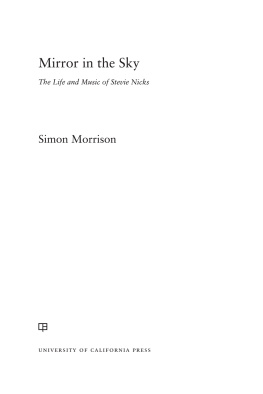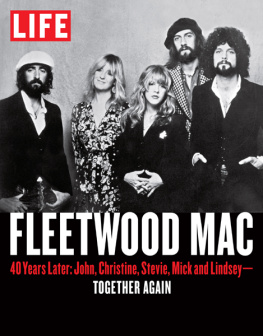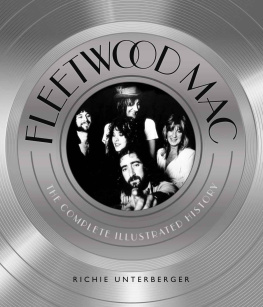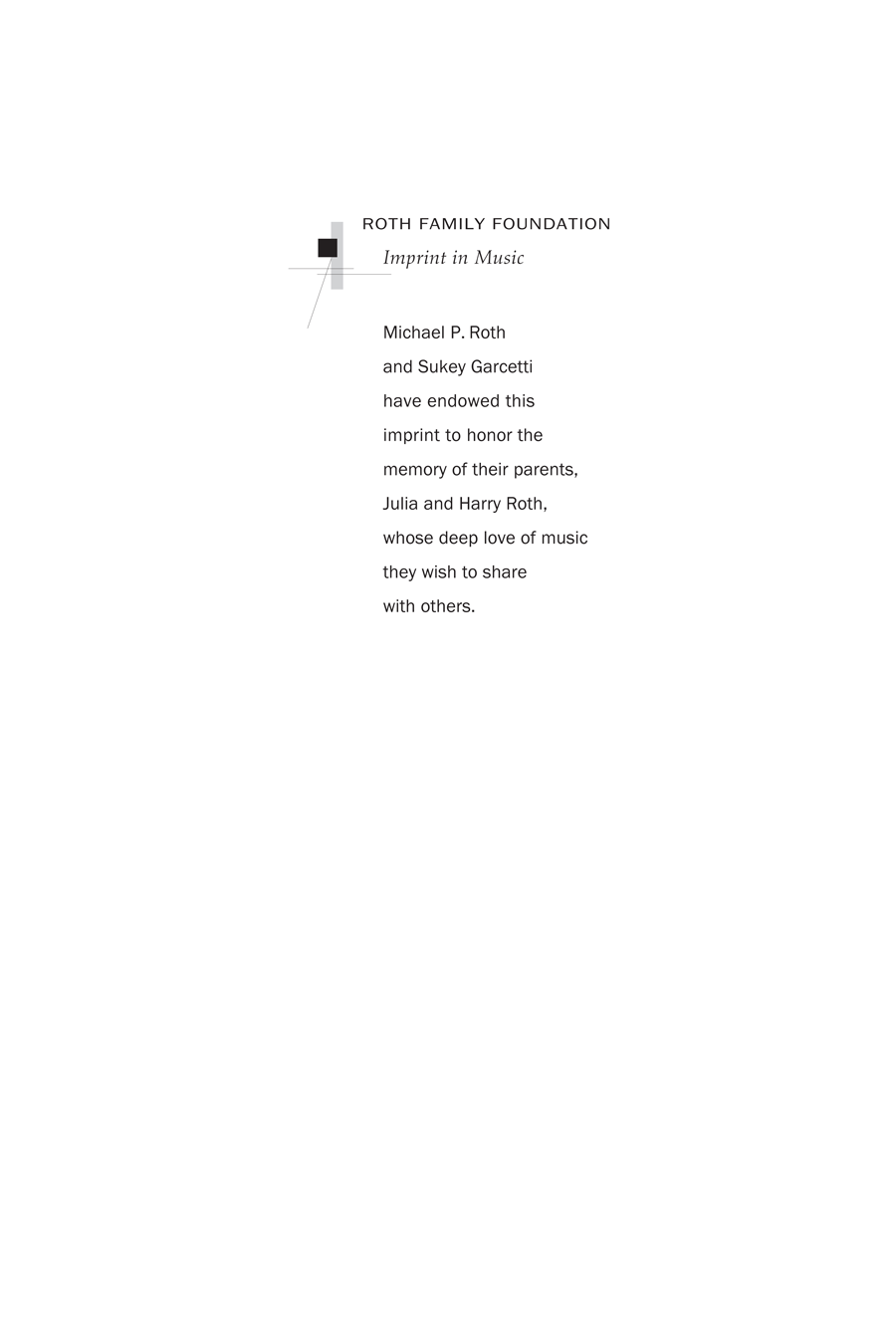Names: Morrison, Simon Alexander, 1964 author.
Title: Mirror in the sky : the life and music of Stevie Nicks / Simon Morrison.
Description: Oakland, California : University of California Press, [2022] | Includes bibliographical references and index.
Identifiers: LCCN 2021062927 (print) | LCCN 2021062928 (ebook) | ISBN 9780520304437 (hardback) | ISBN 9780520973091 (ebook)
Subjects: LCSH : Nicks, Stevie. | SingersUnited StatesBiography. | Rock musiciansUnited StatesBiography.
Classification: LCC ML 420. N 6 M 67 2022 (print) | LCC ML 420. N 6 (ebook) | DDC 782.42166092 [B]dc23
Introduction
Crystal Visions
Its November 5, 1979, at the Checkerdome in St. Louis. Stevie Nicks, on tour with Fleetwood Mac promoting their album Tusk, performs a new song, Angel. She sports a claret-colored beret that can hardly contain her mass of blond curls, and a layered party dress reminiscent of the Roaring Twenties. The tune evokes a giddy dance hall ditty, made giddier when Nickss bandmate and former romantic partner playfully throws his arm around her shoulders during the chorus. She lights up, he bathes in her glow, then she breaks free and the band shiftsmaybe even struggles, just a bitto keep up with her, to match the might of her voice. She imbues the song with such possibilities of form, meaning, and purpose as will only be revealed after listening again and again to different versions captured on tape and film. That night, on stage, she grabs the mic and quickly looks to the left, smiling in delight; then, before the final shout-out, she treats the audience to something unexpected: buck-and-wing dancing, blending steps from the Mashed Potato and the Charleston, channeling the Follies. A real show. The steps seem hard to pull off in her platform heels, but she delivers, rotating her hips and pumping her fist, immersed in the power of her presence.
A thousand moments like this define the career of Stevie Nicks, who sings of divination, moon goddesses, the stars of the silver screen, her grandmother Alice and Alice in Wonderland, Joan of Arc, sibyls and sylphschanneling all their energies into her songwriting. Her music reflects and refracts desire, need, and regret; the most beloved tracks attest to an artist of profound knowing, unapologetic instinct, and much hard-won wisdom. In her ballads, shes often the truth-teller capable of transgressing boundaries, honoring that part of herself that hurts the most and forming from that acute act an intense bond with her audiences. Today, Nicks remains loyal to the heroines who lit the way for her and the audiences who have cheered her on for some fifty years. The artist and her career are generous and optimistic and fierce. Her music matters.
Steeped from childhood in her grandfathers country songs, Nicks formed her first group, a Mamas & Papasstyle quartet called Changing Times, while still in high school. After college in the San Francisco Bay Area and four years with a group called Fritz, she and her partner, Lindsey Buckingham, relocated to Los Angeles. Their album Buckingham Nicks (1973) did not sell especially well but caught the attention of drummer Mick Fleetwood, who invited Buckingham and Nicks to join Fleetwood Mac.
Nicks wrote hit after hit with Fleetwood Mac, as did Buckingham, a singer, virtuoso guitarist, and innovative producer. Their arrival marked a change in geographic location as well as style. The group had been based in England, soaking up American vernacular and producing occasional singles like the ballad Need Your Love So Bad. Guitarist Peter Green founded the original Fleetwood Mac, joining drummer Mick Fleetwood and bassist John McVie in 1967 for a debut at Great Britains National Blues and Jazz Festival at Windsor. Christine Perfect, voted one of Britains top girl singers (along with Petula Clark) in the late sixties, sang with a rival blues band called Chicken Shack before marrying John McVie and, after a brief solo turn, becoming part of his band.
As a California band, Fleetwood Mac occupied the same commercial space as acts like the Eagles, but with richer syntax. The rebelliousness of rock and the angst of the blues were tempered by harmonic Novocain, pulsed ambience, and melodies that rose and fell like the orbs in a lava lamp. Nicks added a playful diablerie to the mix, and the listener feels the strength of her will even as part of a languorous vibe. Rumours, her second record with Fleetwood Mac, is remarkably still on the charts, thanks to the enduring appeal of her song Dreams, Buckinghams Go Your Own Way, Christine McVies Dont Stop, and the magical effect on all the tracks of the layers and layers of overdubs. Not all the great music made the final cut. The song Nicks cared about the most at the time, the love-hate anthem Silver Springs, was excised for logistical reasons. (In addition, Buckingham was embarrassed by the intimate circumstances that inspired it.)
In remarks for the 2013 deluxe edition of Rumours, Buckingham called the process of making the album organic. The success of Rumours was breathtaking, topping the billboard charts for thirty-one weeks and selling ten million copies in its first year. Warner put the album on the cover of its 1977 annual report.
The popularity complicated the making of a sequel to the point of creative paralysis. It could not be topped, but the band was under pressure to at least equal it. Tusk, the double album follow-up to Rumours, takes experimentally anti- Rumours license. Dissonant pitch clusters and suggestive noises recall what modernists of earlier times called flaques sonores (sound puddles). The title track, referencing male genitalia, involves a marching bandexcess for excesss sake, given the remixing required to wrestle the trumpets and trombones playing the stinger chords into tune. The result was a commercial flop that has been extensively analyzed, with Nicks often bearing the brunt of critical censure. His claim becomes accurate when negated; the strongest songs are hers.
The most successful commercial band of the seventies created, in the final year of that decade, a brilliant album whose brilliance rested in its absence of commercial appeal, and Tusk gained cult status as a decadent Los Angeles response to the punk movement.songs. Only Nickss track When I See You Again adds some sense of sincerity to an otherwise over-polished recording that makes clear the band members were never in the studio at the same time.













